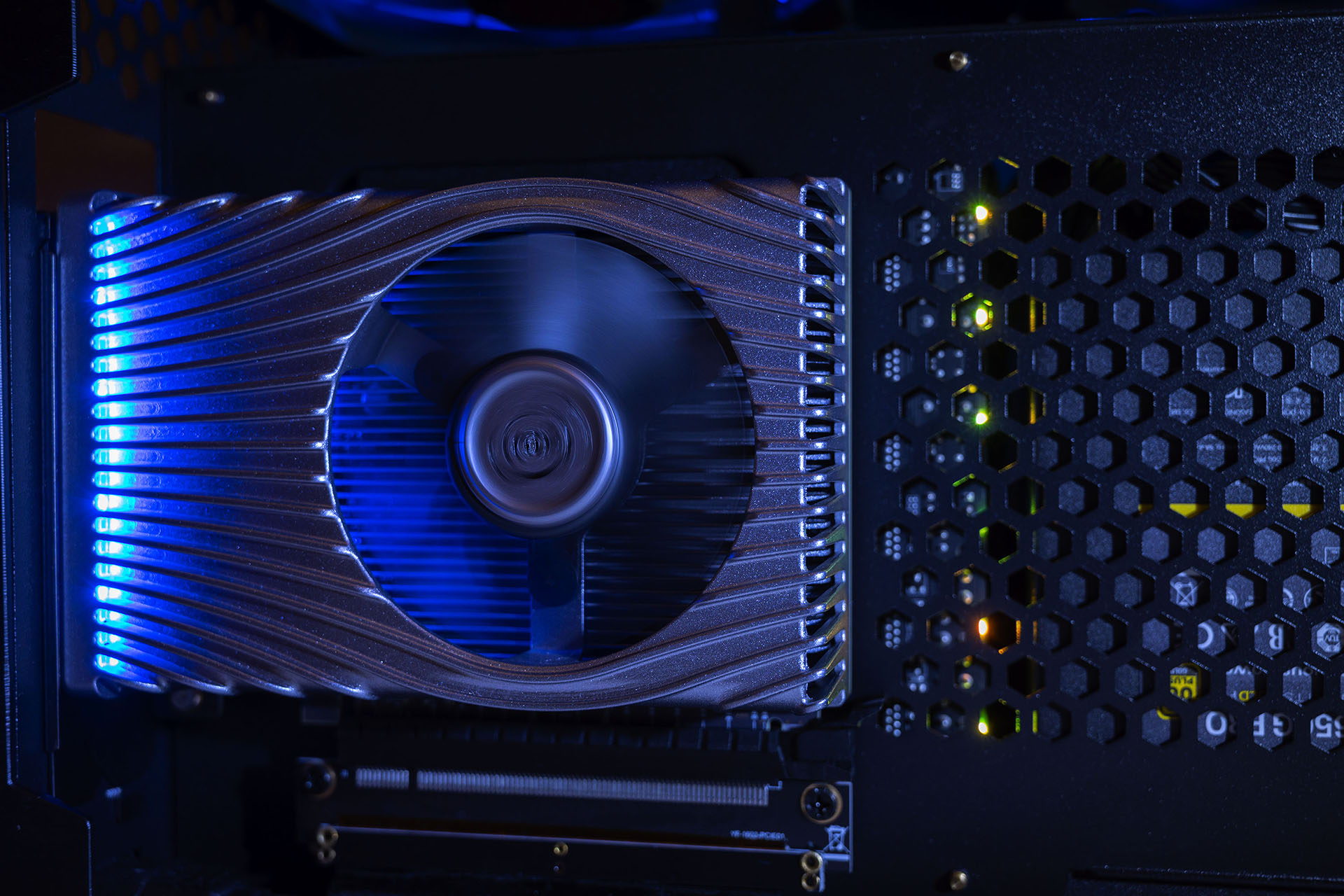You won't see Intel Xe graphics in your desktop gaming PC in 2020
Don't throw out your GeForce or Radeon discrete graphics card just yet.

We finally have some reliable information on Intel's aspirations for its discrete graphics card, DG1—and it doesn't look promising for desktop. A slide from a presentation given at the Argonne National Laboratory—the future recipient of an Intel Xe supercomputer—suggests Intel's first discrete GPU is destined solely for use in laptops.
The slide uncovered by serial leaker Komachi_Ensaka, and used as part of a presentation for the Exascale Computing Project, suggests the Xe DG1 GPU is a low-power part to be used exclusively in a mobile form factor for laptops. That is despite it making an appearance as a shiny PCIe desktop card (pictured above) over at CES 2020.
Surprised? We didn't think you would be. It's been long suspected that Intel DG1 would launch as a mobile-only part, although we've not had anything quite so concrete to indicate so until today.
Fit with 96 Execution Units (EUs) and a low-power variant of the Intel Xe architecture (Xe-LP), there wasn't much hope for DG1 to rock the AMD/Nvidia boat too much upon release anyhow. That was just enough for 1080p at 30fps in Warframe at the time, and no amount of tweaking was going to make that a contender for the best graphics card title.
It could spawn some fascinating Intel Tiger Lake and DG1 combinations in the laptop space later this year, however. Intel Tiger Lake is set to launch in the very near future, and is similarly kitted out with a 96 EU Gen12 (Intel Xe) integrated GPU. Intel's been discussing some form of multi-GPU support, but we're highly skeptical as to whether this will prove of any use to us gamers.
As for high-end Intel Xe GPUs, Raja Koduri, Intel's chief architect, recently confirmed the two high-end forks of the Intel Xe architecture, Xe-HP and Xe-HPC, are tailored towards chomping big data and deep learning. It's for this reason that the Argonne National Laboratory is privy to a few more details on the Intel Xe architecture, its next supercomputer, Aurora, will be powered by Intel Ponte Vecchio GPUs connected to Sapphire Rapids Xeon server chips.
So it might be the end for gamers' hopes of a discrete Intel Xe GPU in 2020, but never say never. Regardless, there's nothing that AMD or Nvidia can't already deliver with their Radeon and GeForce GPUs right now—even if it would be nice to have a little more competition in the market to whip up generous R&D budgets.
The biggest gaming news, reviews and hardware deals
Keep up to date with the most important stories and the best deals, as picked by the PC Gamer team.

Jacob earned his first byline writing for his own tech blog. From there, he graduated to professionally breaking things as hardware writer at PCGamesN, and would go on to run the team as hardware editor. He joined PC Gamer's top staff as senior hardware editor before becoming managing editor of the hardware team, and you'll now find him reporting on the latest developments in the technology and gaming industries and testing the newest PC components.

